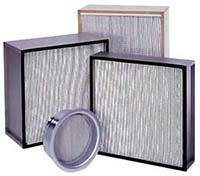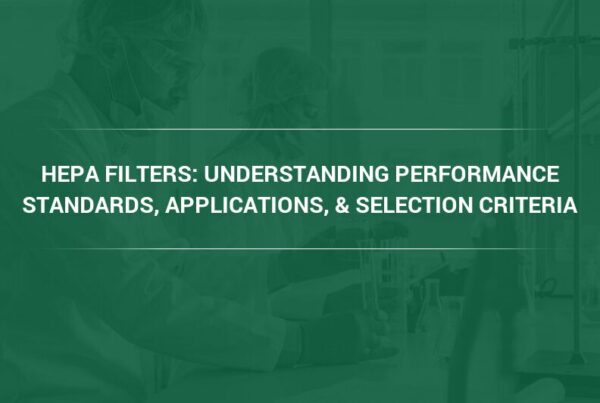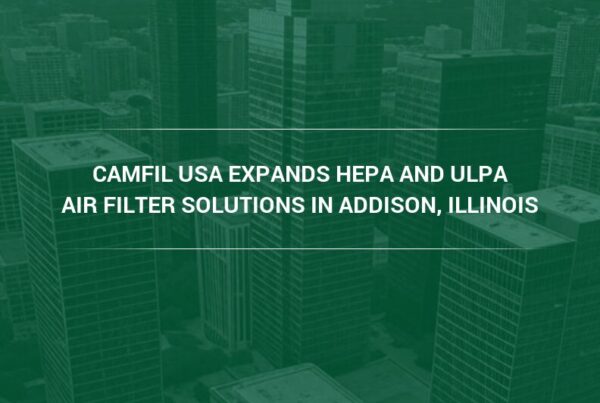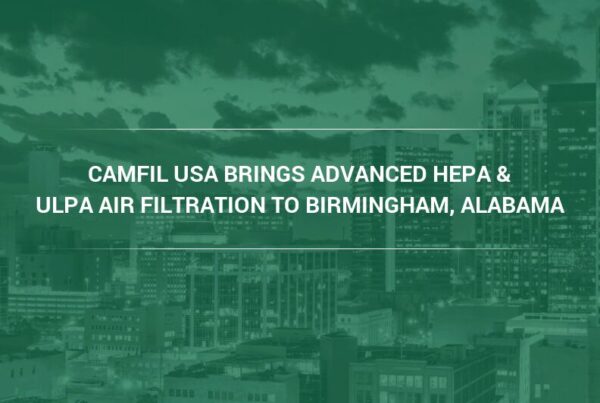HEPA filters; high efficiency particulate air filters are not a recent innovation. Originally developed for the Federal Government in the early 1950s their original design intent was to capture contaminants associated with the manufacture of the atomic bomb. They were also called Absolute filters at that time as the goal was to have absolute efficiency, capturing any and all particles from the air. After World War II, the war to end all wars, the rights to the Absolute filter became the property of a company that is now known as Camfil. For a period of time, into the 1960s the HEPA filter had no commercial viability. Then came transistors and semiconductor industry.
HEPA filters, as defined by the Federal government and the Institute of Environmental Sciences & Technologies, are required to have a minimum removal efficiency of 99.97% on particles 0.3 micron in size. One micron is 1/25,400 of an inch and the smallest particle that the naked eye can see is around 10 microns in size. The period at the end of this sentence is approximately 615 microns. Imagine, a HEPA filter must have an efficiency of 99.97% on particles 1800 times smaller than the period.
HEPA filters are the only air filters that are required to be tested before they are shipped from the manufacturer. They are certified for performance and a label is placed on the filter noting its efficiency and other performance characteristics. In many critical applications the end user can also request a letter that certifies performance; a document that is filed as a safety reference throughout the life of the filter.
As filter manufacturing technology has improved, and the cleanliness requirements of product manufacturers has also increased, filter manufacturers have developed HEPA filters that have extraordinary efficiencies even to the level of 99.99995 at 0.12 micron. Imagine this level of efficiency, yet air is able to be moved through the filter.
HEPA filters are used primarily in high tech manufacturing applications such as semiconductor production and pharmaceutical manufacturing. The highest efficiencies are used in the semiconductor industry as a single sub-micron size particle can compromise the circuitry of the microprocessor chip. The HEPA filters are typically installed in a ceiling of a room that is commonly referred to as a clean room. Some rooms have cleanliness levels that only allow less than 1 particle per cubic foot of air. The common atmospheric air sample has tens of thousands of particles. Pharmaceuticals commonly use HEPA filters in the 99.97% at 0.3 micron to 99.99% efficiency. Their demands are not as stringent as the semiconductor industry but they still employ clean room technology to protect the integrity of their products. HEPA filters are also used in nuclear containment, some food and beverage production, and even to protect workers where they may be exposed to hazardous materials such as asbestos.
Another critical application of HEPA filters includes medical facilities. Typically used in th
e ceiling or HVAC systems serving the operating suites they protect the patient from infection and employees and visitors from airborne organisms. As of recent, they are now being installed in critical care patient rooms to protect the compromised patient. As a result, mortality rate reduction has been confirmed through these facility upgrades.
HEPA filters now come in many different configurations, yet all still have the requirement of efficiency testing and certification to meet the definition. 
They are even manufactured for high temperature applications, up to 2000 degrees (F).
The term HEPA has been misused in terms of consumer marketing. In some cases it has been used when referring to vacuum cleaner filters, water filters, even residential furnace filters. These products do not meet the industry definitions nor do they have the required minimum efficiency of 99.97% at 0.3 micron. Critical applications, semiconductor, pharmaceutical, food or beverage and especially medical facilities deserve HEPA filter application knowledge. For assistance with your application Camfil is an excellent technology reference.
Check out Camfil Megalam Energuard HEPA filter for cleanrooms.




